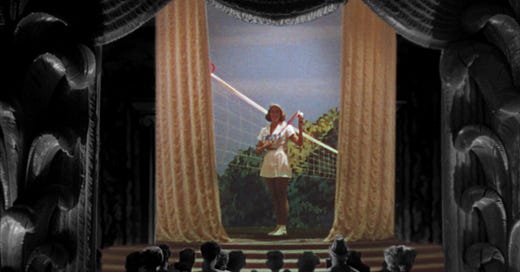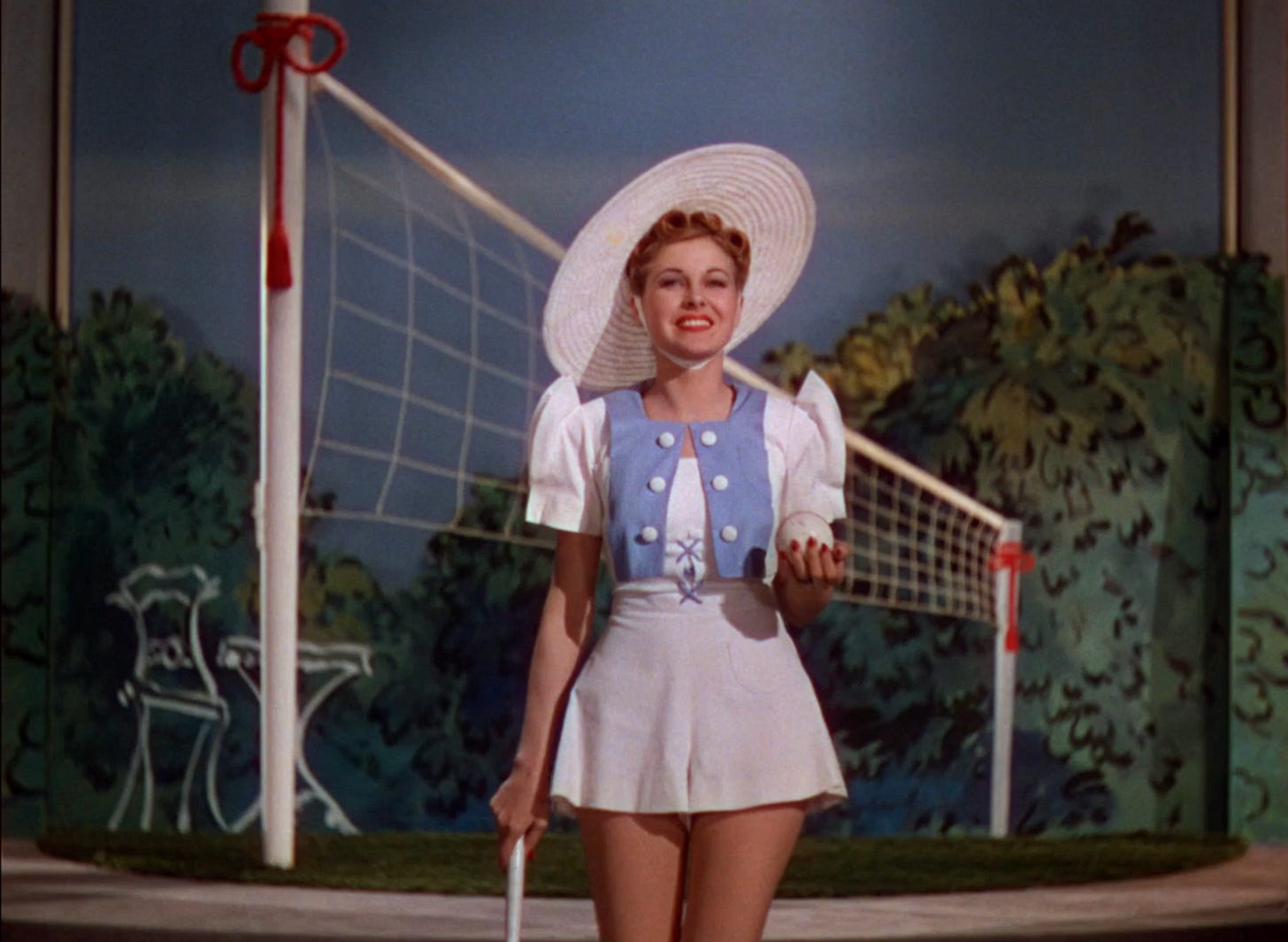This Technicolour sequence from 1939’s The Women is famous for introducing bright colour into an otherwise black-and-white film, but it does so much more!
The six-minute fashion show plays with concepts of audience and stage, performance and perception, and the many layers of artifice put on by characters and actors. Costumes and sets are as heightened when the camera is onstage as when it’s down with the audience — the film techniques clearly interested in comparing and contrasting artifice and reality, and where the two blur together.
The Introduction: Colour and Themes
The introductory transition is crucial; not just shifting from black-and-white to colour, but also establishing literal and figurative planes before moving onto the stage.
In starting by showing the furthest, lowest stage, the scene sets up the meta-ness of our observing the in-world audience with a backlit crowd which looks like a 2D theatre flat / painted plywood cutout (keep this in mind, we’ll come back to it!)
The first shots in colour go from widest to closest:
1. showing the Proscenium arch along with the audience
2. showing the gold scalloping of the tennis set, with camera movement which draws our attention to it
3. onstage close enough to make us feel we’re in the scene with the models

The sequence runs through more fun scenes showing off costumes — all with variations on these three shots — before going to intermission.
Intermission: A Step Back into Meta
The film could simply do an entire sequence showing off the costumes (as Singin’ in the Rain does) but instead uses an intermission to play with meta-ness.
After the Ferdinand the Bull sequence, two women twirl on stage; that shot is crossfaded with one of those women, still twirling as the crossfade reveals she’s now positioned behind the audience.
Voilà! The house lights come up for intermission.


This transition reverses the shots we talked about above, now going closest to widest:
1. ‘in the scene’ with the models
2. showing the stage including gold scalloped sides
3. down in the audience
A desire to creates movement on all planes is why the drinks cart is rolled in as the camera dollys back; multiple points of motion and colour keep things kinetic.
The audience which looked to be a full ‘flat’ is now revealed to be only part 2D cutout, as real fashion plates stand and begin moving around as the camera and lights shift.


It’s a cheeky little joke that like The Women itself, the flat looked black-and-white at first, but here appears in full colour!
After a brief intermission, the show continues . . .
Continuing the Fantasy
Like the transition from on-stage down into the audience, there’s a spin, but instead of a crossfade this goes from a simple cross-screen wipe; perhaps they cut out a section of the fashion show, or perhaps they didn’t want to repeat themselves, or perhaps they just really loved a wipe transition (this was roughly years before said wipes became so overused as to be passé, after all).
After a few more gorgeous gowns set against increasingly ridiculous and unrelated backdrops (complimentary), the fashion parade finishes.
Finish: a 180
Capping off the sequence is a hard cut back to black-and-white which is also and the first ‘reverse shot’ onto the faces of the audience.
This finally breaks colourful fantasy spell, and simultaneously abandons the three planes it was operating on.
The scene goes back into the film language and angles used to this point of The Women, and stays in them for the remainder of the film.
Takeaways
If a sequence in your film is meant to POP! — whether a daydream or merely a ‘day to day fantasy’ — changing more than one element can really set it apart. The fashion parade goes into Technicolour, but it also involves other theatrical elements in the multiple levels of staging, the ‘flats’ cutouts, and keeping the camera looking only one direction.
All this combines for a stunning, truly surreal experience, while intro and outro keep the film itself grounded in the characters’ world.




